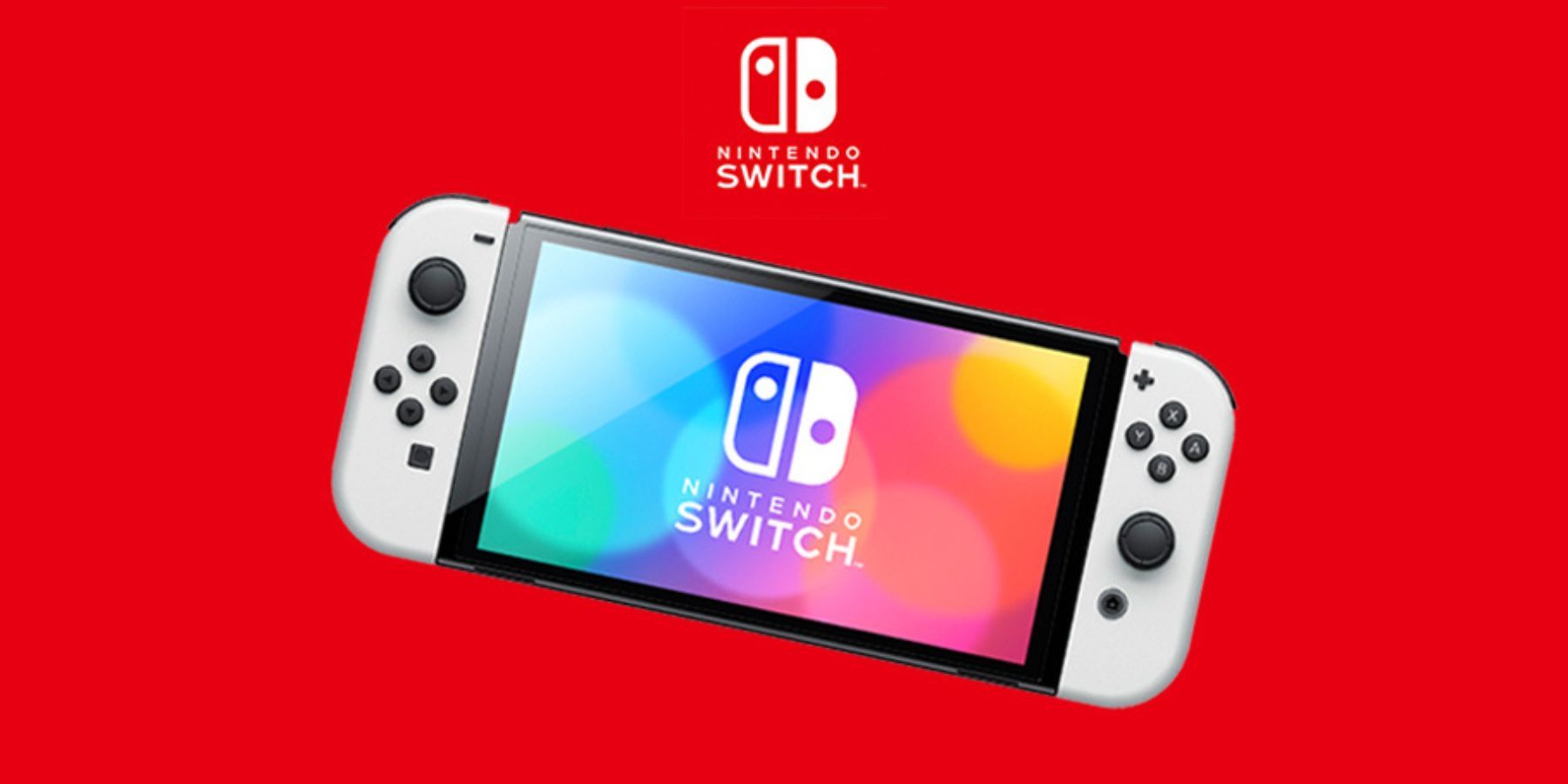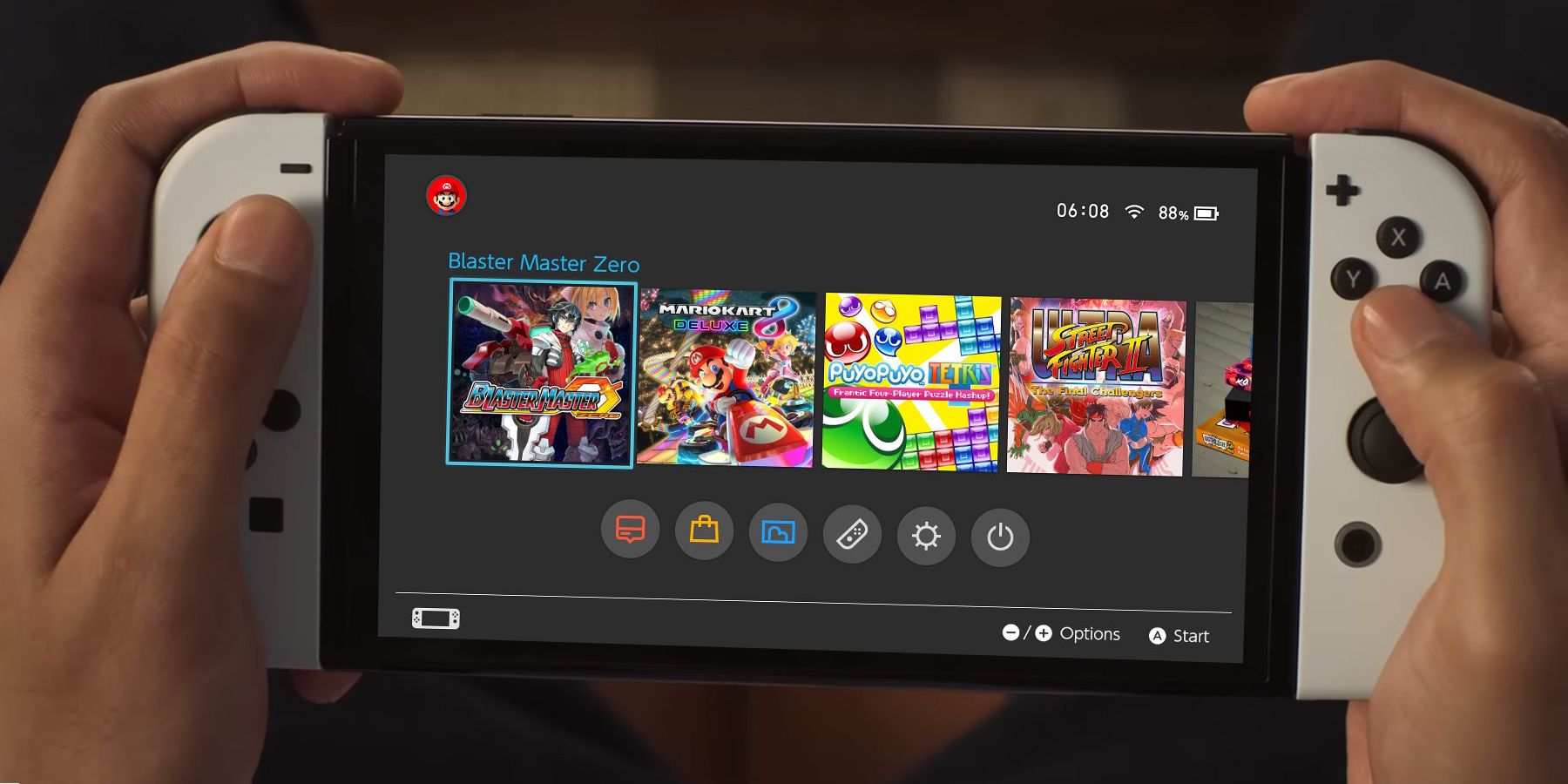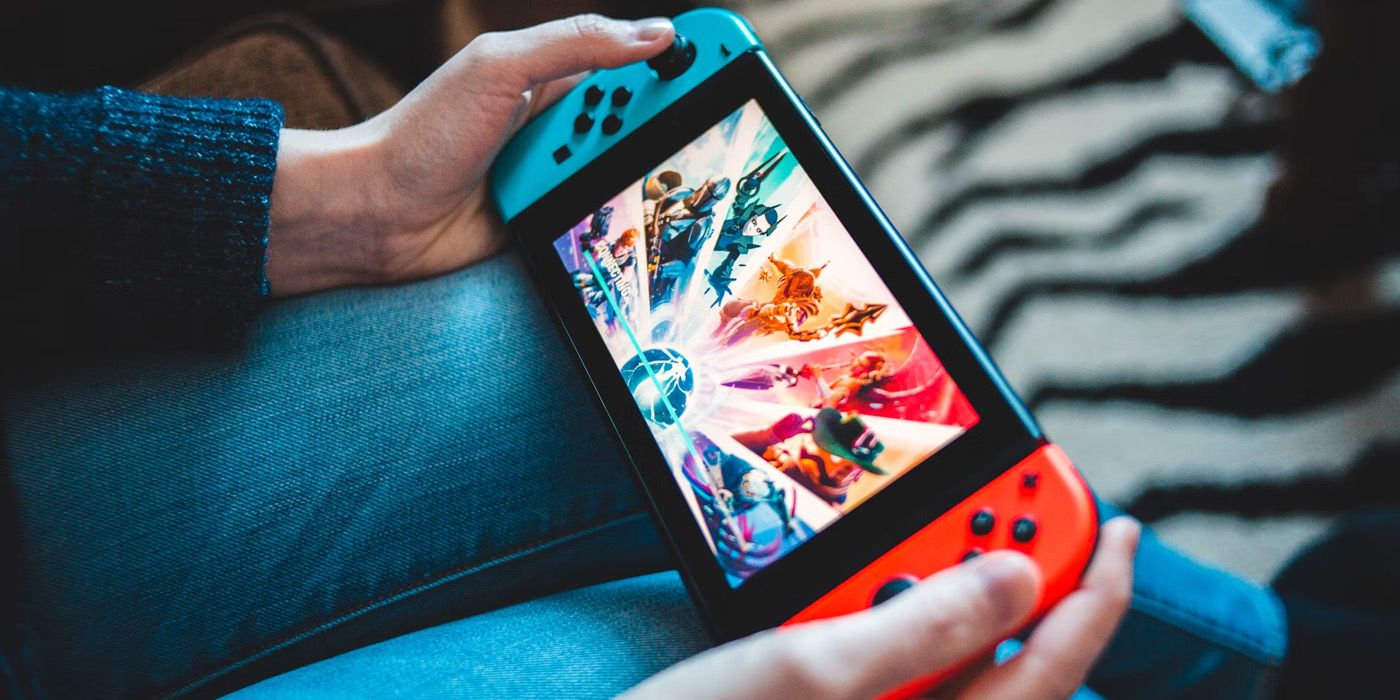-
Nintendo Switch
Pros- Cheaper than OLED
- Performance equivalent to the OLED version
- A bit lighter
Cons- Regular LCD display
- Half storage capacity
-
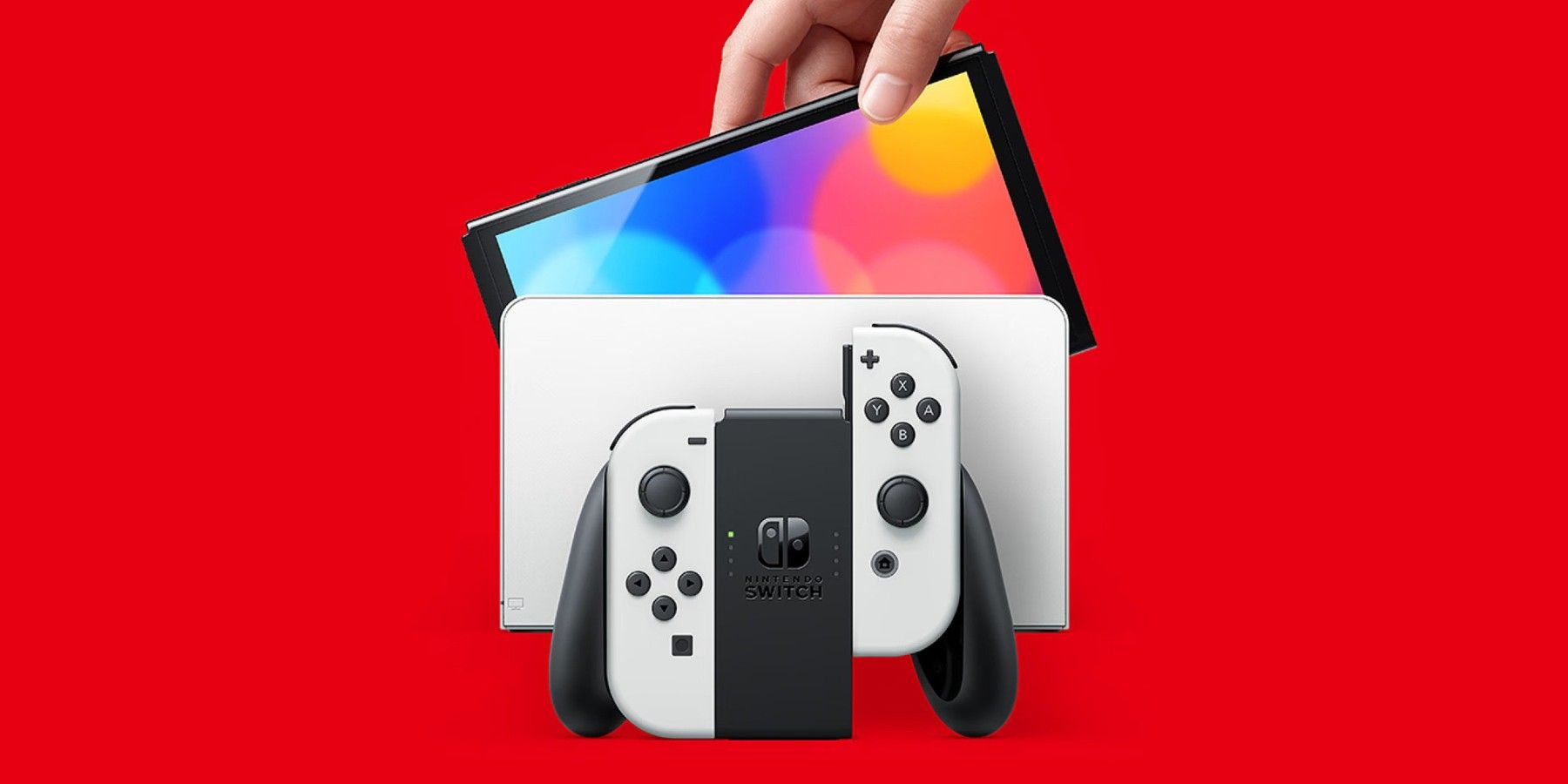
Nintendo Switch OLED
Pros- Significantly better display with OLED panel
- Twice the storage capacity
- Comes with a LAN Port
Cons- No improvement on the inside
- Costs $50 more
The Nintendo Switch surpassed the 120 million user base mark in 2024 and, despite being an entry-level retro gaming handheld console, the Switch has sold more than 139 million units overall, making it the “main business” for the company. These sales stats, however, aren’t just for the original Switch version released in 2017, but a good chunk of them are for the OLED edition as well.
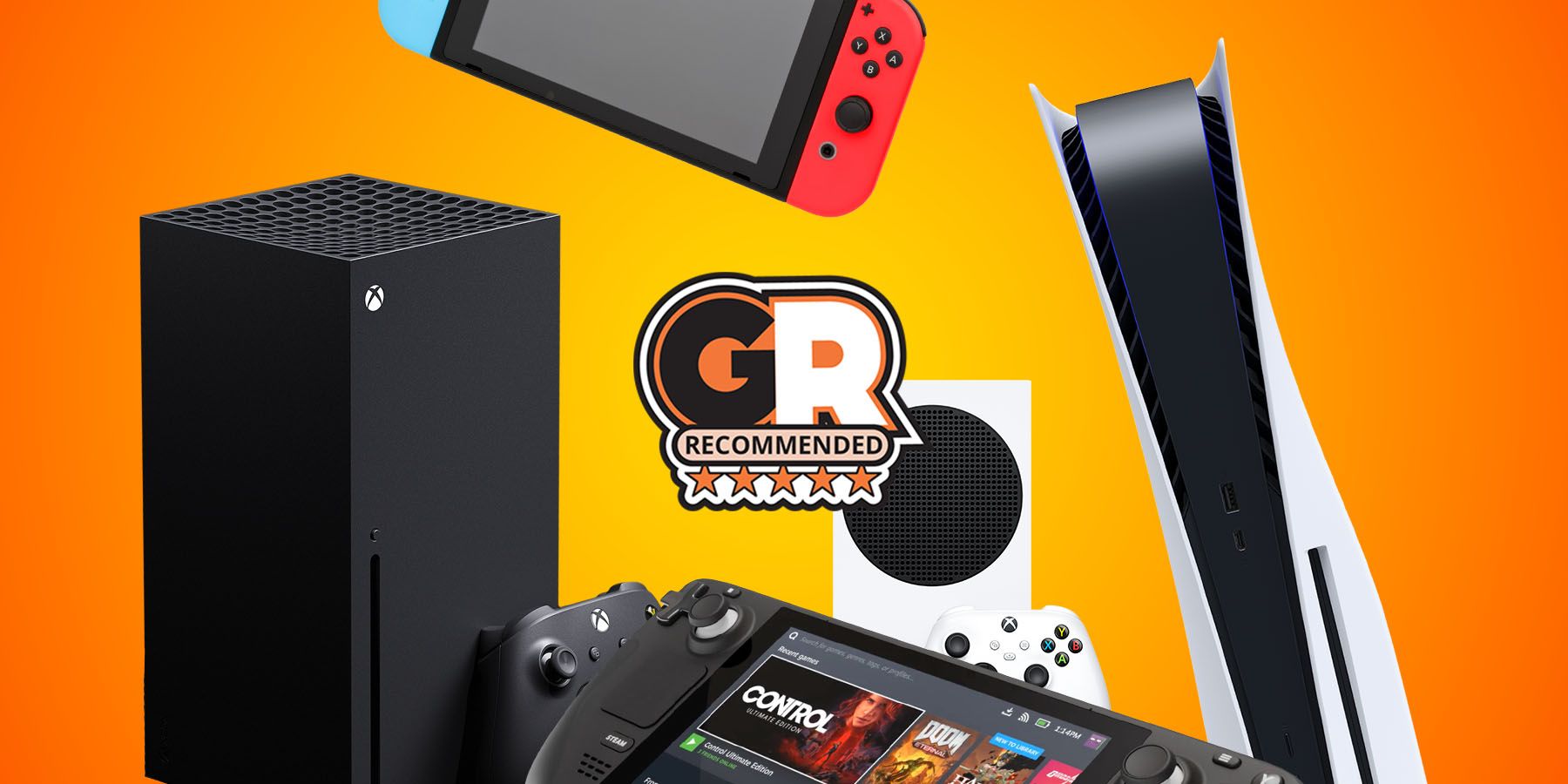
The Best Gaming Consoles in 2024
Buying a new game console in 2024 can be tricky, given the plethora of options on the market, but Game Rant has gamers covered!
So, why is it that users are switching to the OLED edition? Also, what makes the original Switch still relevant enough to be the second best-selling Switch console after the OLED version? In this guide, we will compare the original Nintendo Switch and the Switch OLED in detail, analyzing the hardware, functionality, connectivity, display, and ease of usage of both consoles.
Specifications
Before delving into the actual performance, it’s crucial to understand what makes both the Switch and the OLED edition different from each other. Although both of them are fairly identical in specifications, there are still minor and major differences in a few areas that may or may not be a deal-breaker for users.
Nintendo Switch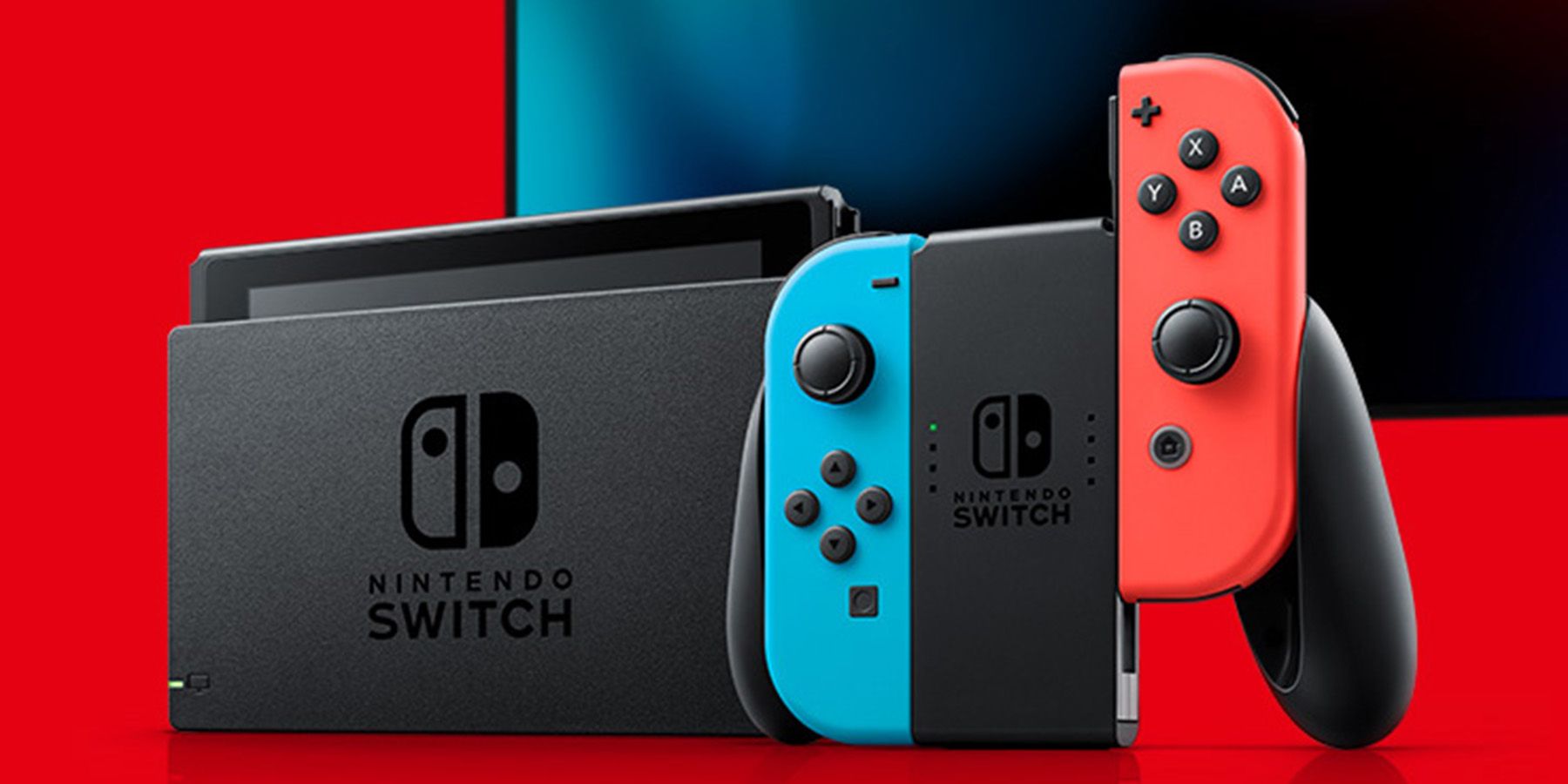
The Nintendo Switch was launched in March 2017, featuring a 6.2-inch LCD screen with a resolution of 1280×720. The display is a multi-touch, capacitive panel and has thick bezels on all sides. The size of this original console is quite large at 9.4 inches in length, but it is still fairly compact with only 0.55 inches of thickness even with the Joy-Cons attached.
Weighing approximately 0.66 lbs, or 0.88 lbs with Joy-Con controllers attached, the Switch is a lightweight handheld device, easily portable in a backpack. The Nintendo Switch is powered by a custom Nvidia Tegra X1 processor, featuring four ARM CPU cores and 4GB LPDDR4 RAM, which makes it possible to play games like The Legend of Zelda and Super Mario Odyssey-like titles with ease.
Even though the Switch has been replaced by many modern handheld consoles like Steam Deck and ROG Ally, it uses Nintendo’s proprietary OS that has its own game collection not available on other operating systems. This is why the console is still a big success to this day, despite having inferior and outdated hardware compared to the latest handheld devices.
The switch is equipped with a 32GB of internal storage, but users can add a microSDHC or a microSDXC card to increase its capacity by up to 2TB. A USB Type-C is provided for charging or for connecting to the Switch dock, which helps in connecting the Switch to a TV for a bigger and more immersive gameplay experience. By default, the Switch has a 720p resolution, but can support up to 1080p resolution via HDMI in the TV mode.
Users can also use its Wi-Fi 5 adapter to quickly download the games or use Bluetooth 4.1 to connect to any external Nintendo Switch-specific gaming controllers to enhance their gameplay. While the console provides built-in stereo speakers, a 3.5mm audio jack is also provided for users who like a better surround sound gaming experience.
Nintendo Switch OLED
The Switch OLED version was released in October 2021, roughly four years after the original edition and two years after the Lite edition. It was once expected that the Switch OLED would not only bring a better OLED panel, but would also bring enhanced specifications. However, the CPU wasn’t upgraded and the OLED edition still uses the same Nvidia Tegra X1 chip as the regular edition.
Therefore, theoretically, performance should be identical. However, the OLED panel does bring some additional upgrades that increase its value for every dollar spent, including twice the storage capacity. While the Switch has only 32GB of internal storage capacity, the OLED one comes with 64GB, making it ideal for storing more games on the default storage drive. However, most users still feel the need to go with an external microSD or SDHC card as they would want to keep many games permanently installed.
Another great addition to the Switch OLED is the dedicated Ethernet port. Even though the console already has a Wi-Fi adapter to download and play games wirelessly, there is no debate about how good a simple LAN port is. It brings an almost lag-free experience and is more consistent in speed. Hence, users who are sitting on the couch in their homes can simply plug in an ethernet cable or use the Wi-Fi when outside.
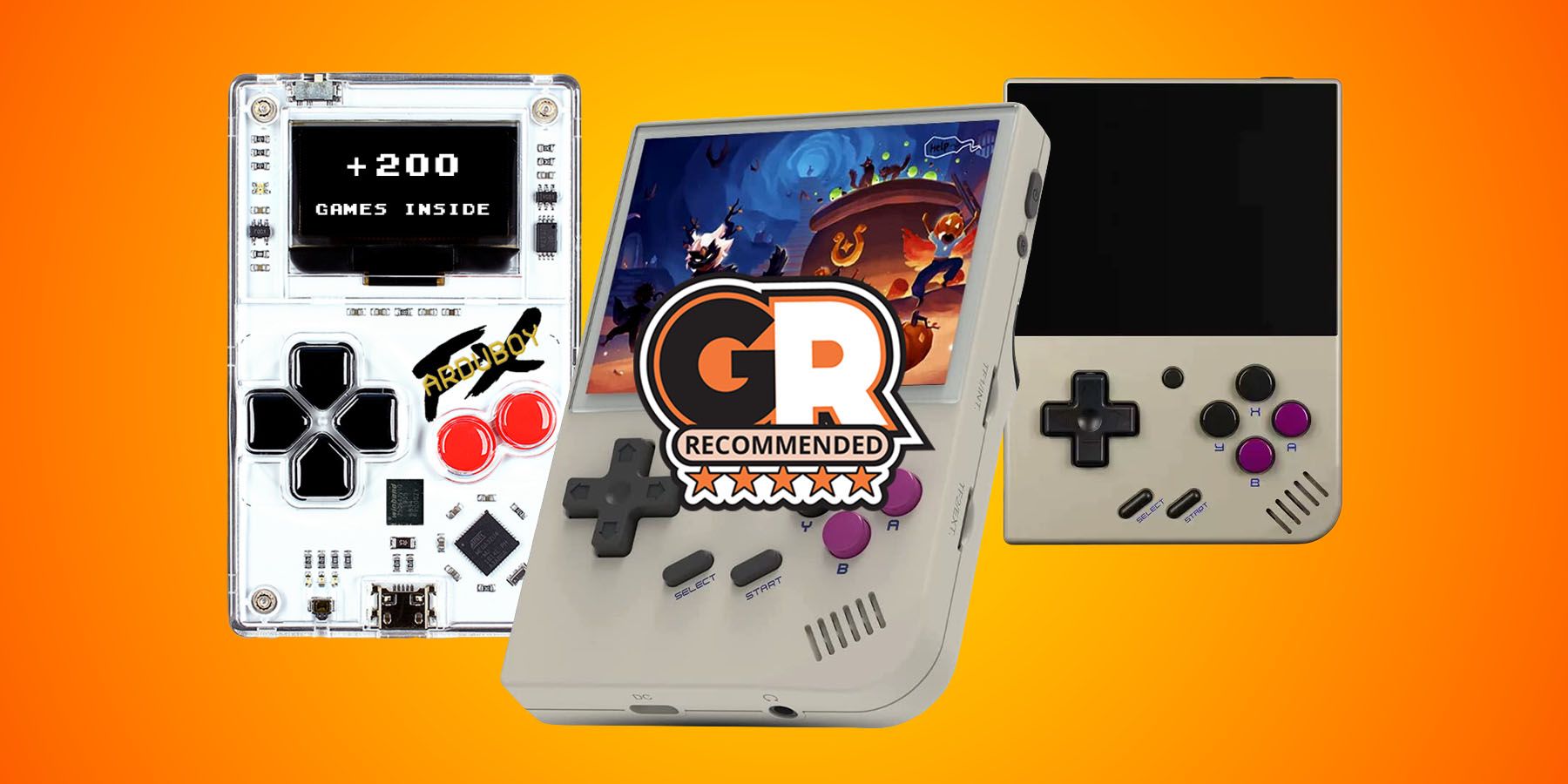
The Best Handheld Gaming Consoles under $75 in 2024
Need a portable gaming console on a budget? These are the best you can buy for under $75.
The Switch OLED also brings a significantly improved kickstand compared to the Switch. This doesn’t affect the performance of the OLED version, but helps it retain stability when put on the desk.
Apart from these differences, everything seems to be identical to the original Switch version, including the battery, sensor, connectivity, and compatibility. Now let’s get to the primary factor that distinguishes the OLED one from the original Switch edition.
Display
The OLED edition was specifically designed to provide better picture quality as the OLED panel is far better than a regular LCD. It boasts almost an infinite contrast ratio as each pixel on an OLED panel acts as a light source on its own. This results in truer blacks, which appear to be perfect even when used in a completely dark room with all the lights off.
The OLED panel also provides better color reproduction and highly accurate colors to make the gaming world more vibrant. Hence, the OLED panel-equipped gaming monitors are much costlier than the IPS or VA panel ones. However, the Switch OLED is just $50 more expensive than the regular Switch edition, which is a big upgrade to the system’s overall appearance.
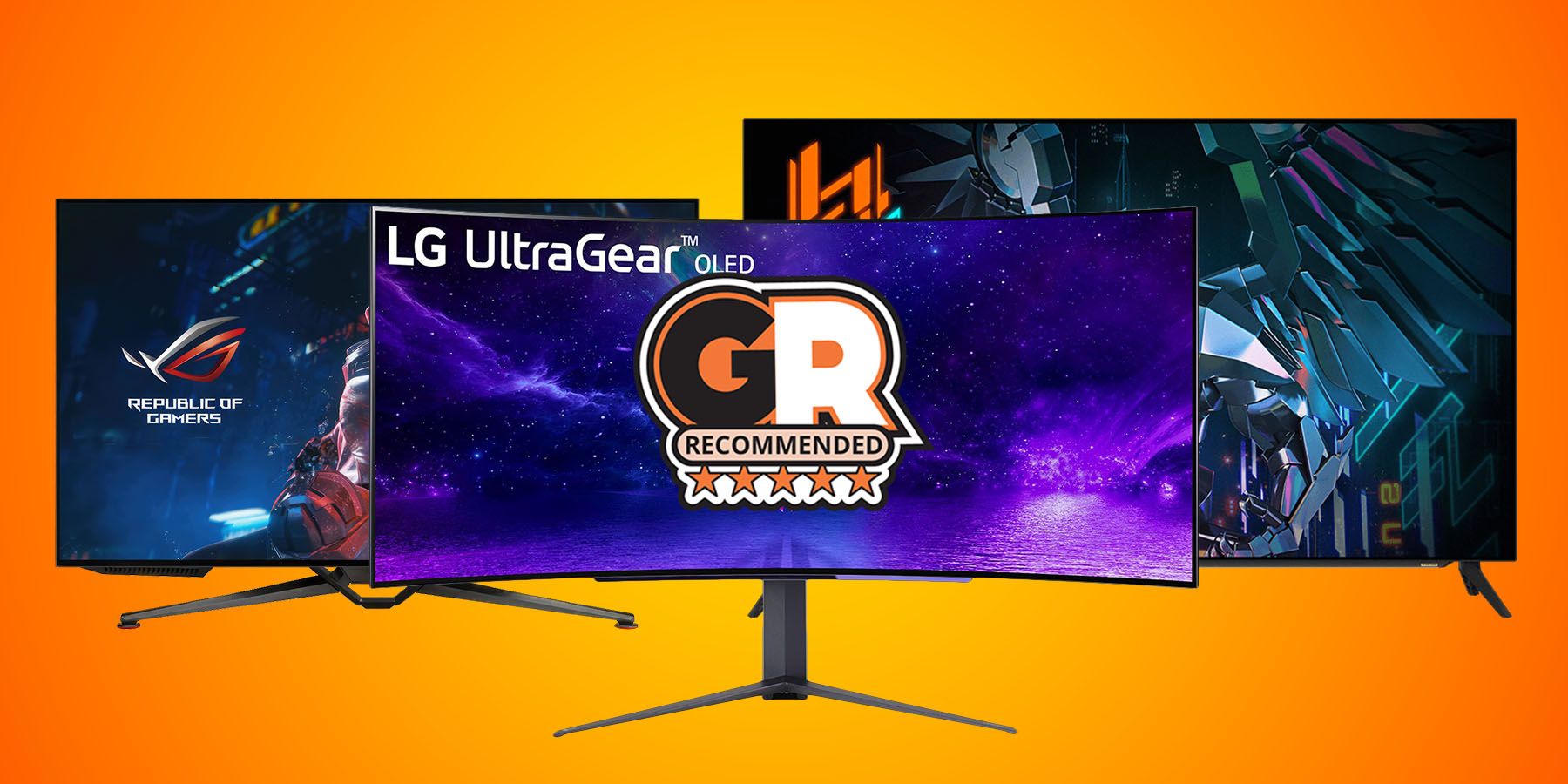
The Best OLED Monitors For Gaming in 2024
OLED Monitors are redefining the limits of what Is possible in terms of visual fidelity. Here are some of our best picks you can buy right now!
Apart from upgrading the display panel on the OLED version, the actual screen size is also affected. Now the screen size is 7 inches compared to 6.2 inches on the Switch. This is, however, without any addition to the size of the console itself. The console still measures 4 inches in height and 9.5 inches in length, but now the bezels are thinner, making more space for the actual OLED panel.
The resolution is still the same and the output can be up to 1080p on a TV. Most users hoped that the OLED edition would bring an upgrade to the video output by supporting up to 4K or at least 1440p resolution, but unfortunately, this isn’t the case. Nonetheless, the onboard display is far superior to most regular TVs users find on the market.
Performance
The actual performance of both the Switch and the Switch OLED are identical, however, the speakers on the OLED are punchier. Also, due to a 0.8-inch larger screen, gaming is much more pleasant especially because the colors are highly vibrant on the OLED edition.
The Nintendo Switch is somewhat equivalent to Wii U in performance and, unfortunately, it doesn’t even match the PS4 or Xbox One performance, even though the latter consoles are significantly older and have been replaced by newer consoles built for modern titles. While it’s true that Nintendo doesn’t need a high-end configuration since Nintendo-specific games aren’t too graphically intensive, considering the cost of the current-gen consoles such as the Xbox Series S is the same as the standard Switch, the Switch could have been improved in the hardware area too with the launch of the OLED edition.
Not only is the OLED edition criticized for not supporting 1440p or 4K output on the TV, but also because it doesn’t feature the more popular 1080p resolution on the device natively. As the display grew noticeably bigger, it should have been upgraded in its display quality too.
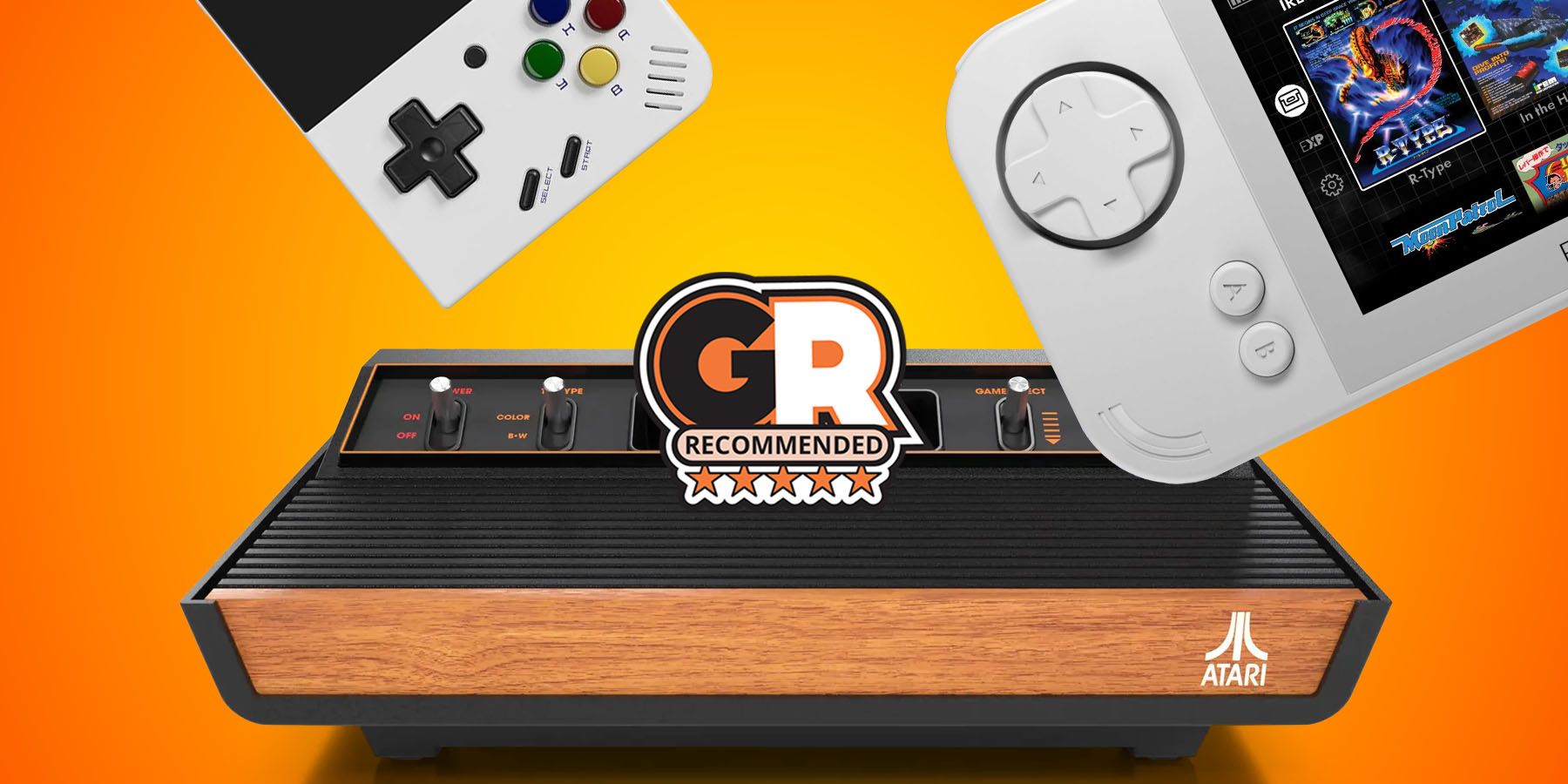
Best Retro Game Consoles in 2024
Tired of modern consoles and want to step back into the world of classic titles? These are the best consoles for retro gaming.
Now the good part is that Nintendo Switch Online has proven itself to be a cheap subscription for gamers, allowing users to save their game data on the cloud and access some free exclusive games. Users on both the Switch and the Switch OLED can benefit from this cheap $3.99 subscription and have access to online multiplayer game mode.
When it comes to multiplayer gaming, the OLED does have a slight advantage over the original Switch. While the Wi-Fi adapter remains the same, the additional LAN port helps in cutting the input lag, making the online multiplayer experience superior.
Battery Life
On paper, both editions bring an identical battery life through their 4310mAh Lithium-ion battery. According to Nintendo, the battery can operate between 4.5 to 9 hours on a single charge and depends on the game users are playing. Nintendo claims that intensive games such as The Legend of Zelda: Breath of the Wild can discharge the battery of both editions in around 5.5 hours, but in reality, the console’s battery depletes in just 2.5 hours.
Obviously, first-party claims are never accurate, but the advertised battery life seems to be too far from the advertised number. One small difference between the Switch and OLED editions is how much power they consume on the TV Mode. As per the company, the Switch OLED consumes around 6W playing a game and 5W when watching a video.
On the other hand, the Switch consumes1W more in both cases. It’s unknown as to what’s the reason behind this difference, but it is slight enough to not get noticed in real-life scenarios. Both the Switch and the Switch OLED take around three hours of charging for a 100% battery, which is equivalent to the time it takes to discharge fully when users play games on them continuously.
Pricing
Here comes the most interesting part. One of the main reasons why a lot of users search for Nintendo Switch vs Switch OLED is because of the changes they introduce for a $50 price gap. On paper, the OLED seems to be providing no additional performance benefits, making the Switch a better choice when it comes to dollars spent per fps, but the functionality of the OLED makes it a worthy choice for its price.
The Nintendo Switch was launched for a price of $299.99 USD while the OLED launched for $349.99. During some sales, the Switch can get cheaper than its MSRP, but the OLED one doesn’t seem to budge from its MSRP. According to the company’s latest sales data, the OLED edition sold more than twice the volume compared to the standard edition(8.17 million against 3.4 million).
This indicates that users are happier with the OLED version, as these days OLED panels in general are getting more attention from enthusiasts. However, unlike the regular monitors, the price difference here is only $50 whereas an OLED gaming monitor costs twice or more than an IPS or VA model, despite matching nearly every other metric.
Conclusion
Despite a plethora of gaming handhelds available with more players entering the handheld market every year, the Nintendo Switch seems to provide a satisfactory gaming experience to its users. While deciding between the Nintendo Switch and the Switch Lite is far easier, it gets complicated when the newer OLED version comes into play.
Considering that users are becoming more aware of higher quality display panels such as OLED, Q-LED, and other sorts of modern technology screens, it’s no surprise that the OLED panel is selling more than the standard edition. It brings better color reproduction, incredibly higher contrast, and a slightly larger screen to provide a much better gaming experience. On top of that, a bigger kickstand keeps the console at different angles, improved stereo speakers, and a LAN port for online gaming seem to add a lot of value to the Switch OLED.
Plus, with the addition of 64GB internal storage, users can now store more games on the Switch OLED, making it a fantastic choice for users who want a pocket-friendly handheld console that is unparalleled in its display. Comparing it with the Steam Deck vs Deck OLED, Steam’s highly popular console may seem to be too expensive.

Nintendo Switch OLED
- Dimensions
- 2.9 x 6.5 x 7.9 in
- Weight
- 1 lb
- Chipset
- NVIDIA Tegra
- Storage
- 64GB
As far as the standard Switch goes, there is a reason why it is still selling like hotcakes these days. Even after seven years of launch, the Nintendo Switch is one of the most inexpensive handhelds present on the market that gives gamers the power to play on the go. Of course, the OLED one is currently a better choice, but the original Switch has the same hardware and almost similar connectivity features to provide a satisfactory experience.

Nintendo Switch
- Brand
- Nintendo
- Battery
- 1 Lithium Polymer batteries required
- Dimensions
- 13.7 x 7.8 x 3.66 inches
- Weight
- 2.65 pounds
It’s expected that the standard Switch sales may drop further as we come close to the launch of the anticipated Switch 2, which is supposed to launch in the first quarter of 2025. Till then, the Switch and the Switch OLED will continue to dominate in the budget handheld console segment, particularly those who are hardcore Nintendo fans.
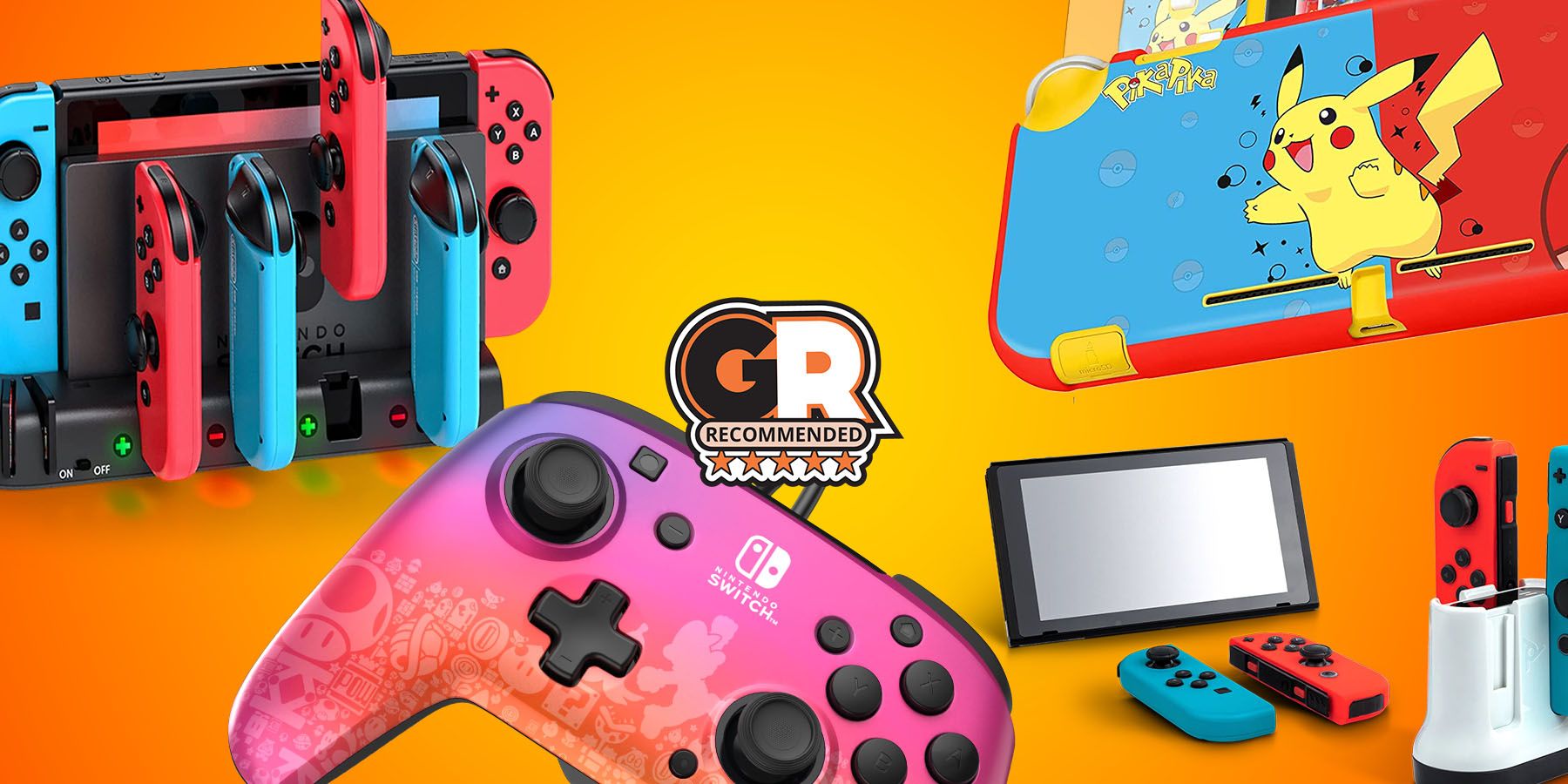
8 Best Accessories for Nintendo Switch
These must-have accessories are a necessity for any Nintendo Switch fans!
FAQ
Q: Is Switch OLED better than Switch?
Yes, the Switch OLED is better than the Switch in terms of display, connectivity, and ease of use. However, both have identical hardware on the inside.
Q: Is Nintendo Switch OLED 4K?
No. The Switch OLED boasts the same 720p resolution as the standard edition. However, both consoles can produce a 1080p output on a TV.
Q: Do all Switch games work on OLED?
Yes, all Switch-compatible games also work on OLED, as there is no change in the hardware or app compatibility.
/cdn.vox-cdn.com/uploads/chorus_asset/file/25740192/corsair1.jpg)

